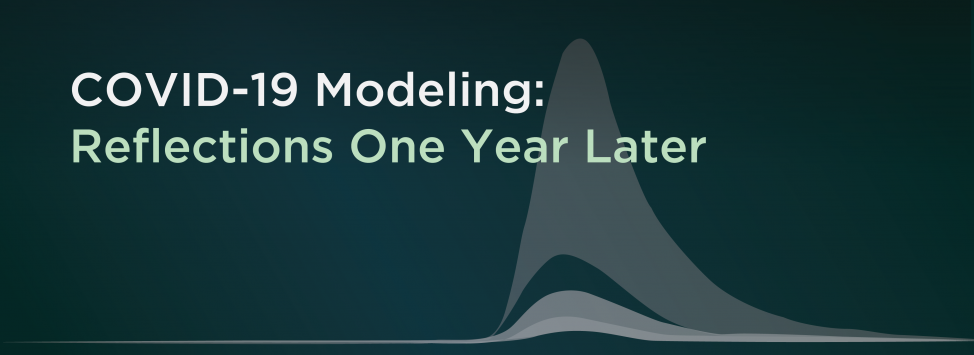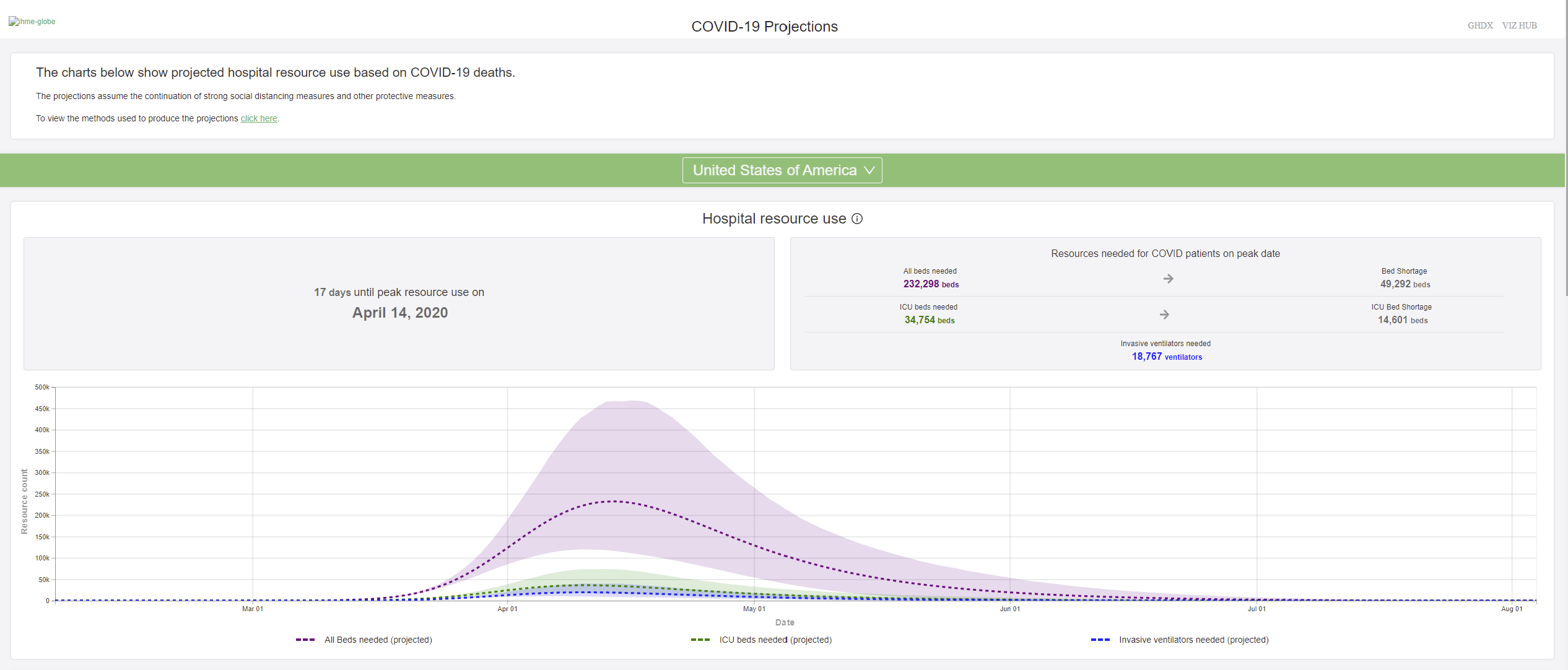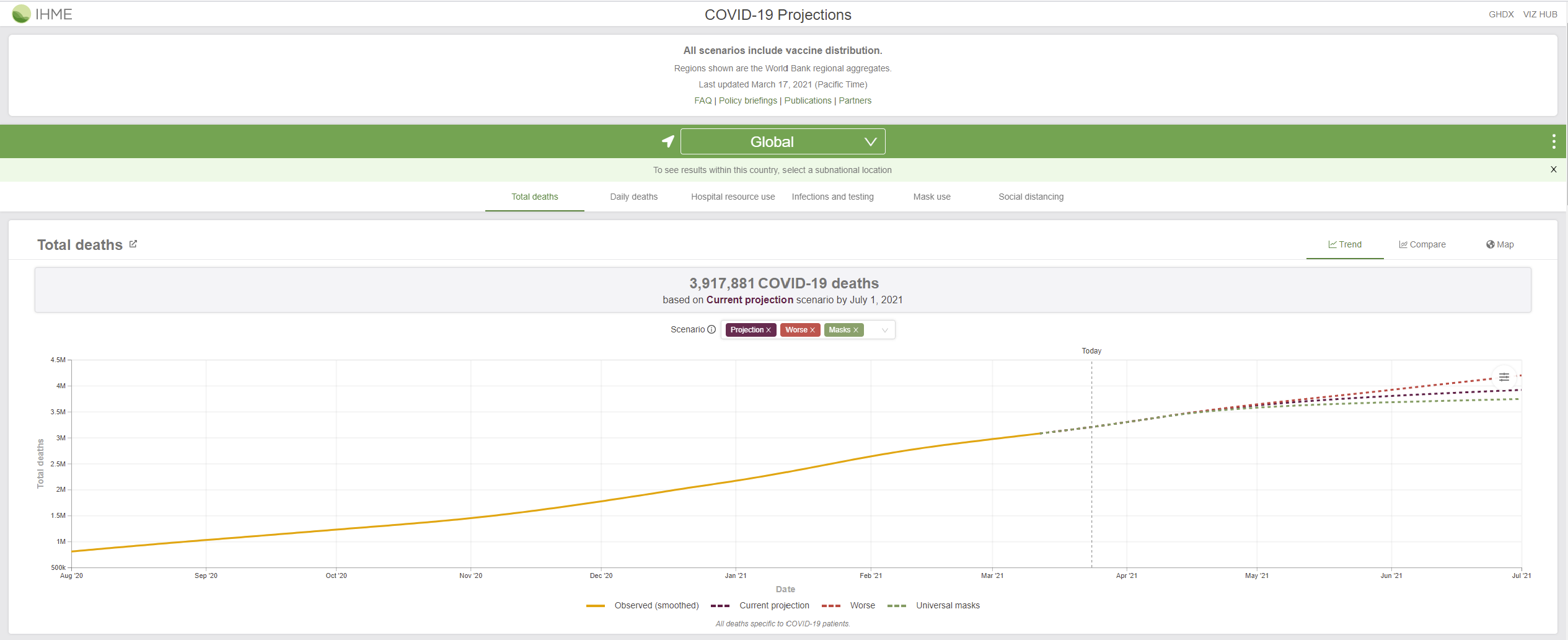We look back at a year of COVID-19
Published March 26, 2021

One year ago today, when the COVID-19 pandemic began taking hold of the US, we partnered with the UW School of Medicine to create a statistical model to help determine when hospital services would be overwhelmed by demand and how to allocate resources accordingly. The early days were focused on incorporating accurate assumptions into the model, which proved challenging as there was not much data available on the previously unstudied disease.
University of Washington Medicine's Michelle Moratti explains how her team worked with IHME to develop the first COVID-19 projections model. View the video with American Sign Language translation here.
“We were told that hospitals may start to reach capacity, and hospital administrators may need to use IHME forecasts to step up and allocate resources," said IHME's Ryan Shackleton. "We were also told that we would need to have this visualization up and running in about a week.” IHME employees worked all hours to get our covid projections visualization tool off the ground.
Shackleton, the visualizations team leader, describes the first month of developing the COVID-19 projections tool. View the video with American Sign Language translation here.
The original tool showed only demand for hospital services and deaths in the United States.

Now on our 5th iteration of the model, we show projections for 160 country-level locations, including infections, mask use, deaths, and more, in addition to hospital resource use. We also show multiple scenarios, incorporating various levels of mask use, social distancing, and vaccination.

And we’re still adapting our work as the science advances and we learn more about COVID-19 transmission.
IHME Director Chris Murray reflects on what we've learned since the first projections model.
Our current focus is on the emerging variants P1, B.1.1.7, and B.1.351 and we recently updated our model to account for reduced cross-variant immunity.

We realized our model could have much broader use, beyond just hospital resource allocation, when Dr. Deborah Birx featured our estimates in a White House press briefing. Since then, our COVID-19 projections have become instrumental in helping members of the COVID Collaborative and other leaders design policies that save thousands of lives. Every week, we release updated estimates for over 200 locations at the state, national, and WHO regional level along with policy briefings to make sense of the numbers.
John Bridgeland, CEO of the COVID Collaborative, explains how their members use the weekly briefings to guide policy.
We are also proud to partner with public health leaders around the world like Dr. Alemnesh Mirkuzie of the Ethiopian Public Health Institute and contribute to their fight against COVID-19 and other infectious diseases. Our other modeling efforts include the Global Burden of Diseases, Injuries, and Risk Factors where we track causes of death and disability around the world, displayed in our GBD Compare tool.
Mirkuzie discusses the impact of the COVID-19 and other models on public health in Ethiopia. View the video with American Sign Language translation here.
It is humbling to work with policy leaders like Governor Tim Walz of Minnesota in the United States to plan for potential impacts of the pandemic on the state's population.
We are also deeply humbled by the opportunity to work with Dr. Amiran Gamkrelidze, Director-General of the NCDC in the country of Georgia.
Not only has the pandemic taken a grave toll on human life, it has also exposed vulnerabilities in our health care systems. A global pandemic requires a global response. But pandemic preparedness accounted for less than 1% of development assistance for health spending in 2019. We have work to do.
IHME Engagement Officer Maja Pasovic reflects on the impact that COVID-19 has had and will continue to have on public health as a whole.
We’re learning more about COVID-19 every day, but one year later there are still many unanswered questions. We’ve been incredibly humbled by the response to our COVID-19 projections model and continually strive to create forecasts that are as accurate and useful as possible.
Chris Murray addresses how much there is still yet to learn about COVID-19. View the video with American Sign Language translation here